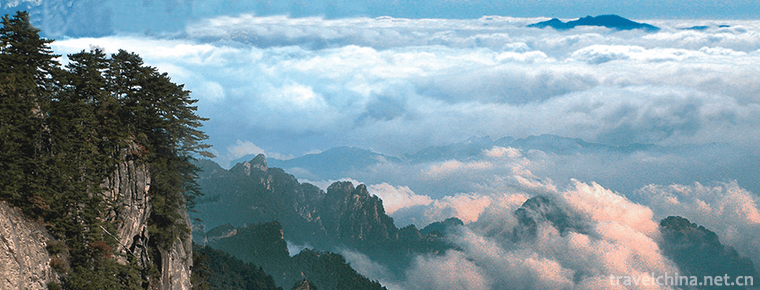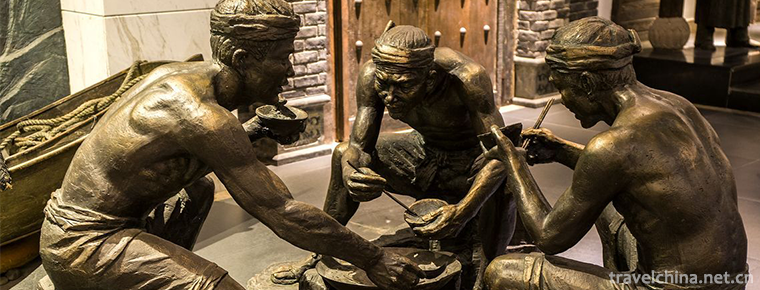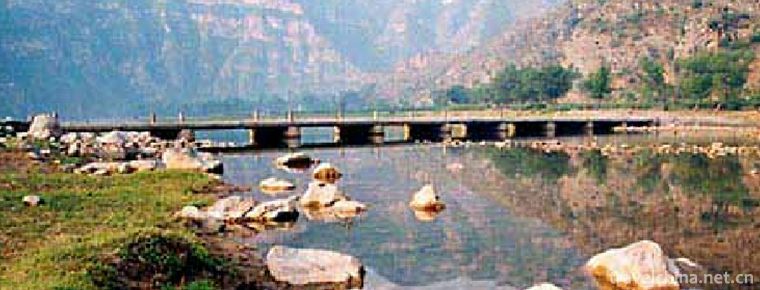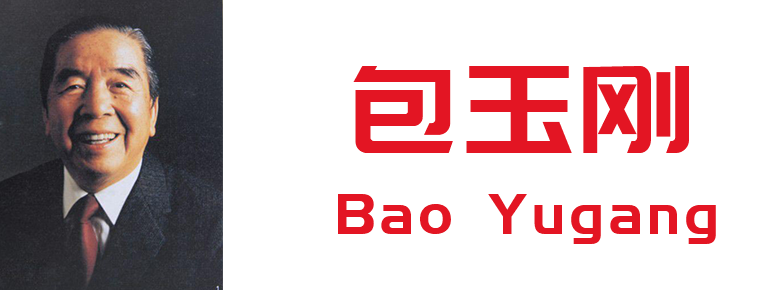Concept of Cheongsam
Concept of Cheongsam
Whether "Qipao" refers specifically to the Qipao in the Republic of China or includes the "Qiren's Robe" or "Qinu's Robe" in the Qing Dynasty. The definition of the concept of Qipao is as controversial as the origin style of Qipao.
As we all know, during the cultural revolution, Qipao was regarded as a symbol of the "four old" and "Feng, Zi, Xiu". The research on cheongsam became a forbidden area in the academic circle. It was only after the reform and opening up that the research on cheongsam gradually increased in the mainland academic circle.
In the early period after the reform and opening up, based on the policy of "the Chinese nation is one family" advocated by the government, and in order to prove that cheongsam has a long history and noble origin, scholars consciously connected the relationship between the cheongsam of the Republic of China and the dress of the Qi people in the Qing Dynasty. "The concept of cheongsam, including the robes of the Qing Dynasty's cheongsam, is not so many, but it is also a school of its own."
For example, there is a note on cheongsam in Cihai: "Qipao was originally used by Manchu women in the Qing Dynasty. There were no slits on both sides, and the sleeves were eight inches to one foot long. The edge of the dress was embroidered with color green. After the revolution of 1911, it was accepted by Han women, and it was improved as follows: straight collar, right oblique lapel, tight waist, length of the garment below the knee, slit on both sides, and small cuff. "
For example, Yu Feng's point of view: "Qipao, as the name implies, refers to the clothes and gowns of women in the Eight Banners before and after Manchu's entry into the pass in the Qing Dynasty, that is, the common clothes of women outside the pass with Manchu and Mongolia as the main body This kind of cheongsam is mainly popular in the north, and most women in the South still follow the customs of the Ming Dynasty, wearing a long upper coat and a long skirt below. "
Another example is yuan jieying's point of view: "the common dress of the bannermen is different from the military uniform, which is generally a robe It has always been a simple straight body as the basic style, known as cheongsam. "Cheongsam was a common dress for men and women in the Qing Dynasty, but it was slightly different in the style of wearing. The official system was different from the civilian in terms of material selection and accessories."
However, the concept of "Qipao" including the "Qiren's Robe" or "Qinu's Robe" in Qing Dynasty has been questioned in academic circles from the very beginning. "In the vast literature of the Qing Dynasty, the word" Qipao "never appeared. In the Qing Dynasty, the Qipao was called" flag dress "or" flag dress "by Qi people, and" Yijie "in Manchu. As a word with special meaning, the word Qipao was first found in Shen Shou's dictation in 1918. Zhang Rui recorded the book "xuehuan xiupu" in which Zhang Rui wrote: "there are three kinds of bandages: Dagang is used to embroider the edge of cheongsam, so it is called biantan". Cheongsam here is used as a specific term to refer to some kind of embroidered clothing
Nowadays, the main viewpoints in the academic circles hold that "cheongsam" refers to the cheongsam of the Republic of China, which developed and formed a relatively stable form during the period of the Republic of China
Zhou Xibao, in his book the history of ancient Chinese costume, thinks: "the robes of Manchu women This kind of robe was very wide at the beginning, and gradually changed into a small waist. Its time was close to the eve of the revolution of 1911. This kind of robe, later evolved into one of the main costumes of Han women, that is, later called cheongsam.
In his book "Chinese cheongsam", Bao Mingxin also made a special elaboration on this issue: "it seems that there is no big mistake to regard cheongsam as the robe of Qiren or the robe of flag women, but there is a suspicion that the meaning of cheongsam is more abundant than that of Qiren or Qinu. In a broad sense, it can be said that cheongsam experienced the development of three periods, namely, the dress of Qi nu in Qing Dynasty, the new cheongsam in the period of the Republic of China and the contemporary fashion cheongsam, among which the new cheongsam in the Republic of China is the most typical and the most important. In a narrow sense, cheongsam is the cheongsam of the Republic of China. Of course, it can also include the cheongsam that basically maintained the characteristics of the cheongsam of the Republic of China after the Republic of China. "
Bian Xiangyang said in his article on the origin of the popularity of cheongsam: "the so-called" cheongsam "refers to the one piece garment attached to the garment At the same time, it must have all or part of the following typical appearance features: the opening or half opening form of the right lapel, the detail arrangement of the stand collar button and the side slit, the plane cutting of the single piece material and the body and sleeve, etc. Although there are views that cheongsam includes the cheongsam of Qing Dynasty and that of women in the Republic of China, the cheongsam in the general sense refers to a kind of women's dress style after the Republic of China in the 20th century. "
There were also many discussions on the concept of "cheongsam" in magazines during the period of the Republic of China. For example, the author named Chang Yan wrote in 1937 "the evolution of women's cheongsam in the past 15 years" in modern family magazine: "what is cheongsam? It can be said that it is a new product adapted to the changes of Chinese women in the new era after the Republic of China era. It can also be said that Chinese women imitated the flag of Qing Dynasty before It's a garment that has been altered in the style of a woman's dress. "

-
Jiaohe ruins
Jiaohe Old Town is the oldest and most well-preserved native building city in the world. It is also the most complete urban relic preserved in China for more than two thousand years.
Views: 137 Time 2018-12-22 -
Baiyunshan National Forest Park Luoyang
Baiyunshan National Forest Park is located in the primitive forest area of Funiu Mountain in the southwest of Songxian County, Luoyang City, Henan Province, with a total area of 168 square kilometers.
Views: 190 Time 2019-02-06 -
Nanwan Lake Scenic Area
Nanwan Lake, also known as Nanhu Lake, is located in Xinyang City, Henan Province. It is known as the "Pearl of South Henan" and is a famous natural scenic spot of Nanwan Lake. All around th.
Views: 183 Time 2019-02-07 -
Zhuquan Village Tourist Resort
Zhuquan Village Resort is located in the north of Yinan County, Shandong Province, 12 kilometers away from the county. It was called Quanshangzhuang in Yuan and Ming Dynasties and was renamed Zhuquan .
Views: 160 Time 2019-03-21 -
Beipiao Folk Stories
Beipiao Folklore is a local folk literature in Liaoning Province. It includes eight categories: folklore, character legend, fantasy story, life story, animal and plant story.
Views: 170 Time 2019-04-04 -
Butterfly Bucket Encouragement of the Browns
Buzz drum dance is a kind of collective dance of men and women of ancestral origin. It has great improvisation. There are two kinds of dance methods: He Xinfang and.
Views: 309 Time 2019-04-04 -
Copper Carving Skills
Hangzhou bronze sculpture is the continuation of ancient bronze manufacture. It developed greatly in Wuyue and Southern Song Dynasty. After Tongzhi in Qing Dynasty, Hangzhou bronze sculpture represent.
Views: 161 Time 2019-06-21 -
Legend of Yongding River
Yongding River legend is one of the local folklores in Beijing. Among many legends, the legend of river blocking is representative; the legend of Shijing Mountain and Shijing Mountain; the legend of b.
Views: 124 Time 2019-07-14 -
Bao Yugang
In early years, he entered Shanghai Zhongxing school. Wusong merchant shipping Academy 。 Drop out of school in 1937 Central Trust Bureau Hengyang office, deputy manager of Hengyang branch of China Ind.
Views: 173 Time 2019-09-06 -
China Agricultural University
China Agricultural University (China Agricultural University), referred to as "China Agricultural University", is located in Beijing City By Ministry of Education of the People's Republic of.
Views: 184 Time 2019-12-21 -
The evolution of Guangyuan
Guangyuan was ruled by Yin state in Xia Dynasty and Ju state in Zhou Dynasty. At that time, the state of Ju was in a state of tripartite confrontation with the states of BA (governing Chongqing) and Shu (governing Chengdu)..
Views: 300 Time 2020-12-15 -
Resources and environment of Leshan
By the end of 2018, the total energy consumption of Leshan City was 15.3994 million tons of standard coal, an increase of 580900 tons of standard coal over the previous year. The energy consumption of 10000 yuan GDP decreased by 4.38%..
Views: 145 Time 2020-12-17









